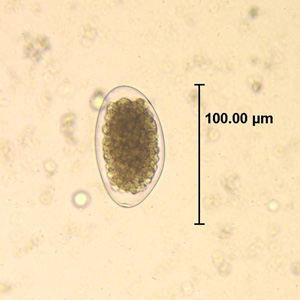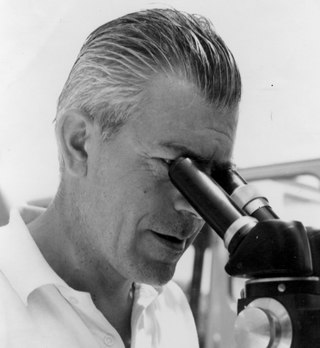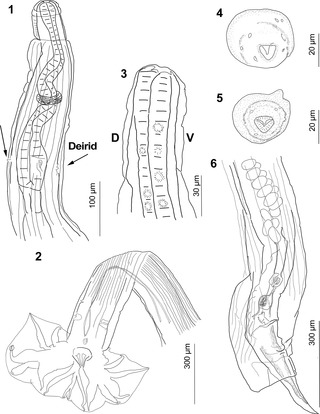
The Strongylida suborder includes many of the important nematodes found in the gastrointestinal tracts of ruminants, horses, and swine, as well as the lungworms of ruminants and the hookworms of dogs and cats.

Gongylonema is a genus of thread-like nematode that was described by Molin in 1857. It is the only currently valid genus in the family Gongylonematidae, though the mysterious Spiruroides – usually placed in the Subuluridae, which are not closely related to Gongylonema among the Spiruria – might actually belong here. They are parasites of birds and mammals, transmitted by insects. Some 38 species are known, about 12 of which have been recorded in Europe.
The Guadalcanal rat is a species of rodent in the family Muridae. It was found only in the Solomon Islands. Since this species was collected between 1886 and 1888 it has not been seen again. It is possibly extinct.

Trichostrongylus species are nematodes, which are ubiquitous among herbivores worldwide, including cattle, sheep, donkeys, goats, deer, and rabbits. At least 10 Trichostrongylus species have been associated with human infections. Infections occur via ingestion of infective larvae from contaminated vegetables or water. Epidemiological studies indicate a worldwide distribution of Trichostrongylus infections in humans, with the highest prevalence rates observed in individuals from regions with poor sanitary conditions, in rural areas, or who are farmers / herders. Human infections are most prevalent in the Middle East and Asia, with a worldwide estimated prevalence of 5.5 million people.

Hassalstrongylus is a genus of nematode worms that infect mostly muroid rodents from eastern North America to South America. The genus is part of the Heligmonellidae and related to genera like Stilestrongylus.
Hassalstrongylus forresteri is a nematode worm of the genus Hassalstrongylus that infects the marsh rice rat in the United States. It was first described as Hassalstrongylus musculi by Marie-Claude Durette-Desset in 1972, but she later recognized it as a different species, H. forresteri. The females cannot be distinguished from those of the other species in the marsh rice rat, H. musculi and H. lichtenfelsi.
Hassalstrongylus musculi is a nematode worm of the genus Hassalstrongylus that infects the marsh rice rat and house mouse in the United States and Oryzomys couesi, Oligoryzomys fulvescens, and Handleyomys melanotis in San Luis Potosí, Mexico. It was first described as Longistriata musculi by Dikmans in 1935, but transferred to Hassalstrongylus in 1971 and 1972 by Marie-Claude Durette-Desset. She later renamed the material she had used to describe H. musculi in 1972 as H. forresteri. The females cannot be distinguished from those of the other species in the marsh rice rat, H. forresteri and H. lichtenfelsi.
Hassalstrongylus lichtenfelsi is a nematode worm of the genus Hassalstrongylus that infects the marsh rice rat in Florida. The females cannot be distinguished from those of the other species in the marsh rice rat, H. forresteri and H. musculi.

Alain Chabaud was a French parasitologist, mainly a specialist of nematodes and sporozoa. He was the Director of the Laboratoire de Zoologie (Vers) in the Muséum National d'Histoire Naturelle in Paris from 1960 to 1989. He was one of the founders of the Société Française de Parasitologie in 1962 and its president until 1975, and president of the Société zoologique de France in 1967.

Trichstrongyloidea is a family of nematodes under the order Strongylida.

Guerrerostrongylus is a genus of nematode worms. Species of Guerrerostrongylus infect mostly the digestive tract of sigmodontine and caviomorph rodents from South America. The genus is part of the subfamily Nippostrongylinae.

Cucullanus is a genus of parasitic nematodes. The genus includes more than 100 species.

Trichostrongylidae is a family of nematode in the suborder Strongylida.

František Moravec is a Czech parasitologist who specialises on the Nematodes, especially the nematodes parasites of fishes. His research is mainly in the field of taxonomy of the Nematoda.

Jean-Lou Justine, French parasitologist and zoologist, is a professor at the National Museum of Natural History in Paris, France, and a specialist of fish parasites and invasive land planarians.

Heligmonellidae is a family of nematodes belonging to the order Rhabditida.

Robert-Philippe Dollfus was a French zoologist and parasitologist.

Hydromyini is a very large, diverse tribe of muroid rodents in the subfamily Murinae. They are the dominant native rodents in Australasia and one of only two native rodent groups there, the other being the R. fuscipes group of the genus Rattus in the tribe Rattini. They are also found in parts of Southeast Asia.

Hassalstrongylus dollfusi is a nematode worm of the genus Hassalstrongylus, first described under the name Longistriata dollfusi by Carlos Díaz-Ungría in 1963 who named it dollfusi as an homage to French parasitologist Robert-Philippe Dollfus. The species was transferred to the genus Hassalstrongylus in 1971 by Marie-Claude Durette-Desset. Serrano et al. redescribed the species in 2021.












